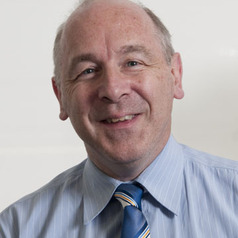Absolute risk is the risk of developing a cancer over a certain period of time.
Relative risk is the risk one group of people has of developing a cancer compared to the risk of another group.
The Conversation’s cancer map shows that the risk of bowel cancer is 10% higher for men and women who have one standard alcoholic drink every day, than for those who don’t drink any alcohol.
This is known as “relative risk” and does not mean you have a 10% chance of getting bowel cancer if you drink one drink per day.
As the map says, it means your risk of bowel cancer is 10% higher than the risk of someone who doesn’t drink any alcohol.
This 10% matters not only in relation to someone else, but also in relation to the absolute risk of getting the particular cancer in the first place. If the absolute risk is small, then a 10% increase still doesn’t make your chances of getting cancer very high.
For instance, a man living in Australia has an absolute risk of 10% of developing bowel cancer over his lifetime. If he drinks one beer every day and his risk of bowel cancer increases by 10%, then it only goes up to 11% overall – so not much higher than it was in the first place.
Absolute risk
The absolute risk of cancer is the chance of developing a certain cancer over a specified period of time, say in one year or in five years.
That chance will change depending on different factors. The most important is a person’s age. Since most cancers are more common in older age groups, your absolute risk of cancer will be higher as you get older.
One measure of absolute risk is the lifetime risk, which is the absolute risk of a certain cancer over the period of someone’s life.
The graph below shows the risk for men and women who live in Australia getting certain cancers before the age of 85.
Women who have genetic changes in the BRCA1 or BRCA2 genes have around a 60% absolute lifetime risk of developing breast cancer. This absolute risk is high.
But this risk is over a whole lifetime, so a woman with altered BRCA genes who ends up developing breast cancer may not do so until she is in her 70s or 80s.
Relative risk
Relative risk compares the risk of cancer in one group of people to that in another group.
The chance of a group with a common risk factor (such as obesity) developing cancer can be compared to the chance of another group of people with a healthy weight. This relative risk ratio will remain constant across the world. But absolute risk will vary depending on how common a cancer is in a particular region.
Relative risk may sometimes be quite high and lead people to believe the absolute risk of developing disease is higher than it actually is.
For instance, a woman from a Western country has a 2 in 100 chance (2% absolute lifetime risk) of developing cancer of the endometrium (lining of the uterus) by the age of 85.
If the woman is obese, her risk of endometrial cancer is twice that of a woman of ideal weight. That is, a relative risk of 2 or 100% greater chance of developing endometrial cancer than a woman who is not obese.
This 100% figure may sound like obese women have a very high risk of endometrial cancer. But, in fact, the risk is still quite low, since doubling the 2% population risk still only makes the absolute risk of endometrial cancer in obese women around 4%. This is still a low probability of cancer.
Be careful not to confuse relative risk with absolute risk and remember the time-frames over which absolute risk can apply.
 Ian Olver receives funding from NHMRC, ARC, Cancer Australia
Ian Olver receives funding from NHMRC, ARC, Cancer Australia
Ian Olver, Director, Sansom Institute for Health Research; Chair of Translational Cancer Research, University of South Australia
This article was originally published on The Conversation. Read the original article.




 Eli Lilly’s Weight-Loss Pill Nears Fast-Track FDA Approval as Profits Surge on Global Demand
Eli Lilly’s Weight-Loss Pill Nears Fast-Track FDA Approval as Profits Surge on Global Demand  FDA Names Tracy Beth Høeg as Acting CDER Director After Richard Pazdur Announces Retirement
FDA Names Tracy Beth Høeg as Acting CDER Director After Richard Pazdur Announces Retirement  Major Drugmakers Slash U.S. Prices and Sell Directly to Patients Amid Trump’s Push for Affordable Medicines
Major Drugmakers Slash U.S. Prices and Sell Directly to Patients Amid Trump’s Push for Affordable Medicines  U.S. Reveals 2026 Medicare Star Ratings: Aetna, UnitedHealth Lead in Quality Scores
U.S. Reveals 2026 Medicare Star Ratings: Aetna, UnitedHealth Lead in Quality Scores  U.S. Backs Bayer in Supreme Court Battle Over Roundup Cancer Lawsuits
U.S. Backs Bayer in Supreme Court Battle Over Roundup Cancer Lawsuits  CDC Shake-Up Sparks Vaccine Policy Clash Between RFK Jr. and Susan Monarez
CDC Shake-Up Sparks Vaccine Policy Clash Between RFK Jr. and Susan Monarez  Obamacare Premiums Set to Double in 2026 as Subsidy Expiration Looms Amid U.S. Shutdown
Obamacare Premiums Set to Double in 2026 as Subsidy Expiration Looms Amid U.S. Shutdown  Novo Nordisk Appoints Greg Miley as Global Head of Corporate Affairs Amid U.S. Pricing Pressure
Novo Nordisk Appoints Greg Miley as Global Head of Corporate Affairs Amid U.S. Pricing Pressure  Novo Nordisk and Eli Lilly Lower Prices for Weight-Loss Drugs Amid U.S. Agreement
Novo Nordisk and Eli Lilly Lower Prices for Weight-Loss Drugs Amid U.S. Agreement  Trump Signs Executive Order to Boost AI Research in Childhood Cancer
Trump Signs Executive Order to Boost AI Research in Childhood Cancer  Eli Lilly Becomes First Pharma Giant to Hit $1 Trillion Amid Soaring Weight-Loss Drug Demand
Eli Lilly Becomes First Pharma Giant to Hit $1 Trillion Amid Soaring Weight-Loss Drug Demand  Trump and Merck KGaA Partner to Slash IVF Drug Costs and Expand Fertility Coverage
Trump and Merck KGaA Partner to Slash IVF Drug Costs and Expand Fertility Coverage  Trump Hints at Major Autism Announcement, Raises Questions on Tylenol Link
Trump Hints at Major Autism Announcement, Raises Questions on Tylenol Link  Eli Lilly’s Inluriyo Gains FDA Approval for Advanced Breast Cancer Treatment
Eli Lilly’s Inluriyo Gains FDA Approval for Advanced Breast Cancer Treatment 




























